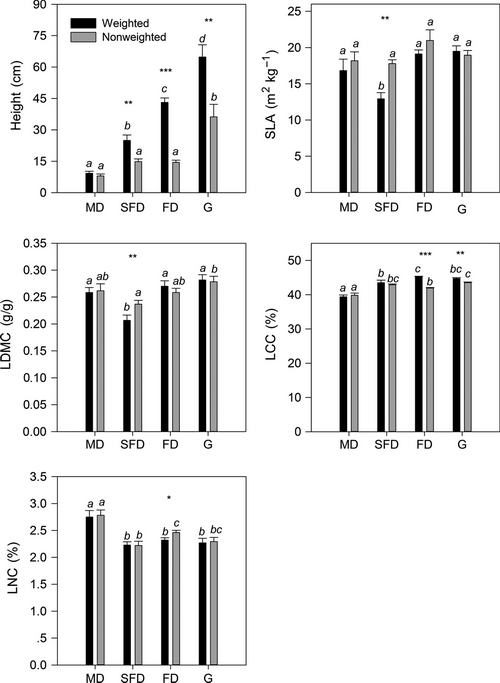Changes in plant community traits along an environmental gradient are caused by interspecific and intraspecific trait variation. However, little is known about the role of interspecific and intraspecific trait variation in plant community responses to the restoration of a sandy grassland ecosystem.
Scientists measured five functional traits of 34 species along a restoration gradient of sandy grassland (mobile dune, semi-fixed dune, fixed dune, and grassland) in Horqin Sand Land, northern China. They examined how community-level traits varied with habitat changes and soil gradients using both abundance-weighted and non-weighted averages of trait values. They quantified the relative contribution of inter- and intraspecific trait variation in specific leaf area (SLA), leaf dry matter content (LDMC), leaf carbon content (LCC), leaf nitrogen content (LNC), and plant height to the community response to habitat changes in the restoration of sandy grassland.
Scientists found that five weighted community-average traits varied significantly with habitat changes. Along the soil gradient in the restoration of sandy grassland, plant height, SLA, LDMC, and LCC increased, while LNC decreased. For all traits, there was a greater contribution of interspecific variation to community response in regard to habitat changes relative to that of intraspecific variation. The relative contribution of the interspecific variation effect of an abundance-weighted trait was greater than that of a non-weighted trait with regard to all traits except LDMC.
A community-level trait response to habitat changes was due largely to species turnover. Though the intraspecific shift plays a small role in community trait response to habitat changes, it has an effect on plant coexistence and the maintenance of herbaceous plants in sandy grassland habitats.
The context dependency of positive and negative covariation between inter- and intraspecific variation further suggests that both effects of inter- and intraspecific variation on a community trait should be considered when understanding a plant community response to environmental changes in sandy grassland ecosystems.
This research achievement has been published on Ecology and Evolution.

Fig. Comparisons of five weighted and non-weighted community-average trait values at four habitats of sandy grassland. Values represent means ± standard errors (n = 6). Different letters in from mean values indicate statistical difference among different habitats at, *p < .05, **p < .01,***p < .001. SLA, specific leaf area; LDMC, leaf dry matter content, LCC, leaf carbon content; LNC, leaf nitrogen content

